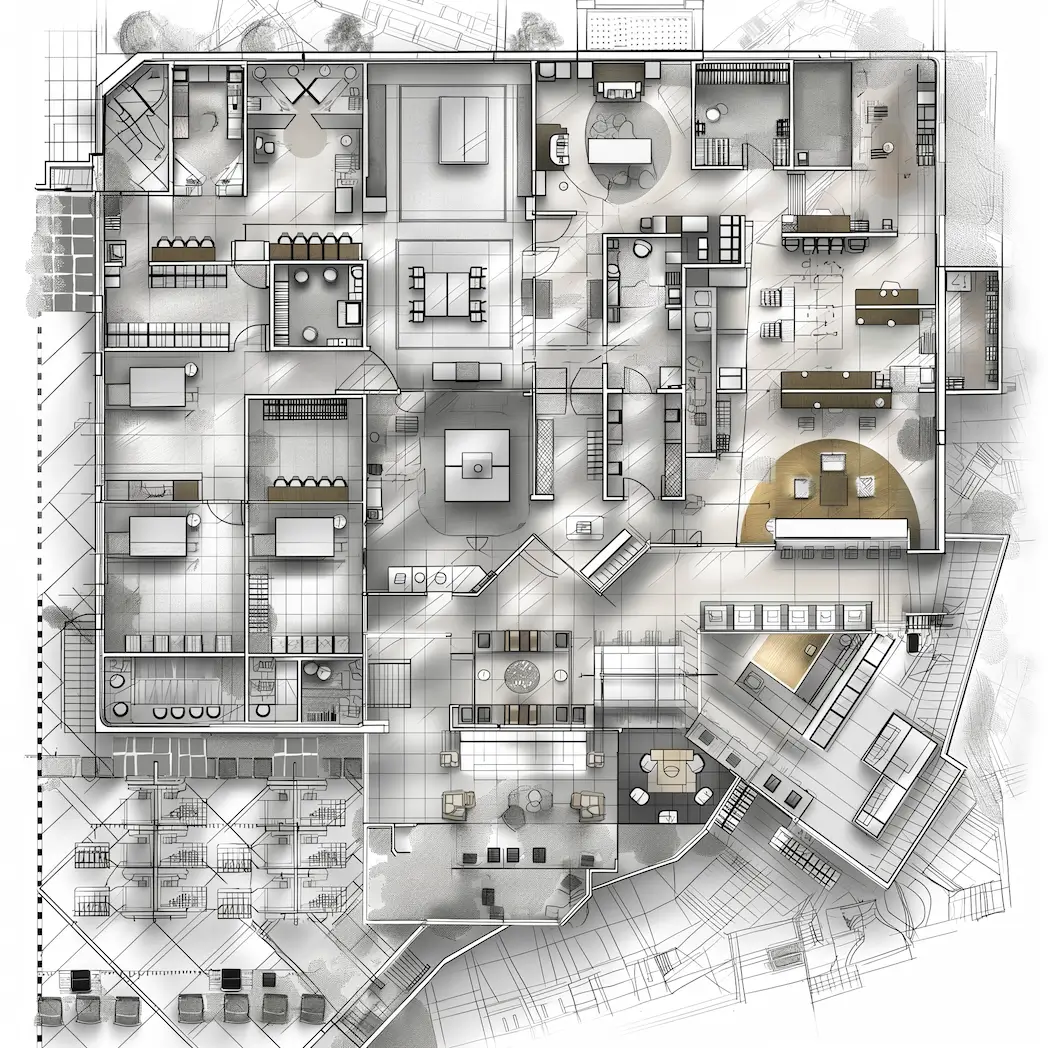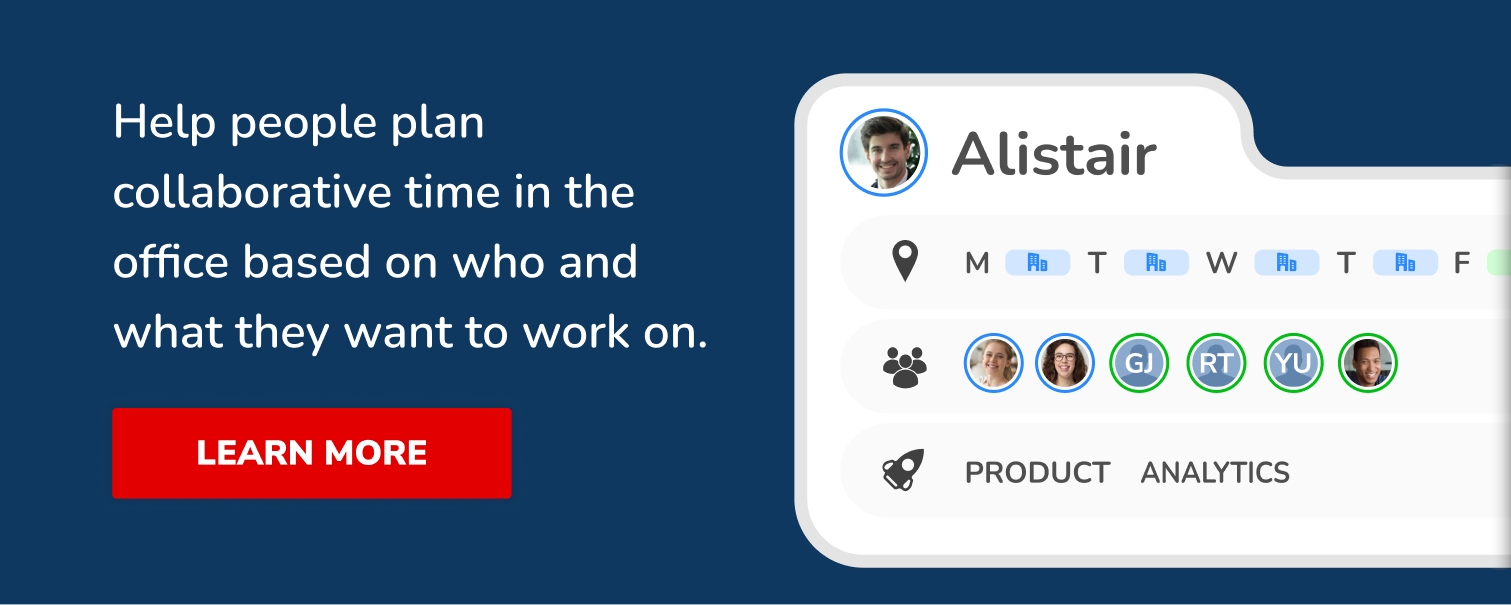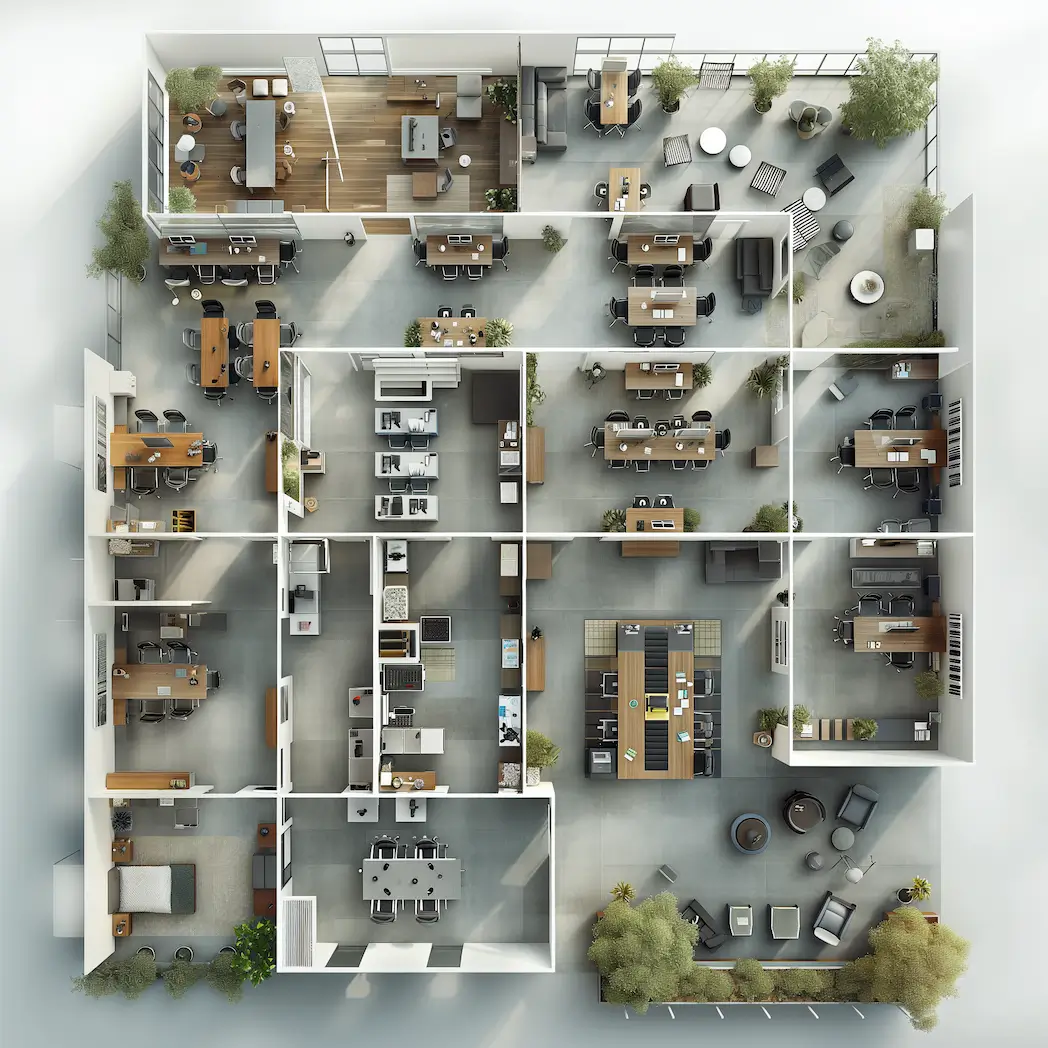The COVID-19 pandemic accelerated the rise of hybrid work models blending remote and in-office work. As of 2023, over 40% of employees have hybrid or remote arrangements. This shift presents challenges for managing offices to support in-person and virtual collaboration.
Effective space management is now crucial for creating workplaces that attract top talent, foster productivity and innovation, control costs, and keep employees engaged. However, leaders must rethink their pre-pandemic strategies of space planning and allocation. There is no universal blueprint; rather, data-driven flexibility focused on employees' changing needs is key.
This comprehensive guide provides readers with practical frameworks, tips, and technologies for mastering space management in an era of unprecedented hybridity. It covers conducting spatial analyses, implementing activity-based working, optimising meeting rooms, integrating space management tech, and building a culture of flexibility.
Following these strategies will allow companies to maximise their real estate value in the long run. More importantly, it will create safe, equitable, and appealing spaces where both onsite and remote workers can thrive in the new world of work.
Assessing Your Current Space

Before implementing new workplace strategies, leaders should thoroughly evaluate existing office layouts, spaces and usage patterns. This analysis reveals areas for improvement and informs data-driven planning.
Conducting a Spatial Review
Start by auditing the full office footprint and floor plans. Document total area, desk numbers, meeting rooms, common spaces and specialised zones like kitchens or cafes. Assess functionality using criteria such as:
- Size and room capacity
- Furniture configurations
- Technology integration and collaboration abilities
- Accessibility, noise levels, lighting quality
- Overall ambiance and workspace experience
Identify spaces no longer fitting for hybrid ways of working, such as crowded open plan desks lacking privacy. Make note of meeting rooms with outdated tech capabilities. Recognise opportunities to introduce new agile environments aligned with activity-based working.
Definition: Activity-based working (ABW) is a work style that empowers employees to choose from a variety of settings according to the nature of their tasks, thereby fostering productivity and engagement. Studies show over 75% of companies adopting ABW report increased employee satisfaction. It is an organisational strategic framework that recognises the diversity of activities people perform in their day-to-day work and provides a variety of work settings, supported by the right technology and culture. This approach emphasises the creation of a culture of connection, accountability, and trust, and allows individuals and teams to perform to their potential. ABW is not just about building spaces dedicated solely to work, but also about designing places that cater to individuals' personal and professional needs
Utilisation Analysis
Leverage desk and room booking data, sensor technology or manual surveying and sampling to quantify utilisation rates across working zones over time.
Occupancy Rates: Assess what percentage of time each area is occupied on average. For example, the collaboration pods may have a 56% occupancy rate, meaning they are in use 56% of work hours on average. Meeting rooms may have a 32% occupancy rate. Aim for 40-60% for optimal utilisation.
Peak Usage: Identify peak occupancy periods, such as Monday mornings for focus rooms. This indicates good candidates for adding capacity via activity-based working initiatives.
Underutilised Zones: Take note of spaces with particularly low occupancy, such as outdated conference rooms with 20% rates. These are prime areas for repurposing or elimination.
Employee Preferences: Survey which spaces employees prefer using and where they struggle finding availability. Address any gaps between supply and demand.
Cost Analysis

Conduct an accurate breakdown of workplace space costs including:
- Real estate costs: Assess rent per square foot and total for office portfolio
- Operational costs: Include cleaning, maintenance, utilities like power and wifi
- Employee space allocation: Calculate square footage and workplace spending per employee
Leverage space planning and hybrid workplace calculators to model and compare space allocation scenarios. Analyse the investment needed to create optimised activity-based working environments vs potential real estate savings from increased occupancy densities. These insights anchor business case justifications.
Accessibility & Inclusivity
Ensure to evaluate workspace accessibility and inclusivity for employees of all abilities and backgrounds, both on-site and remote.
Assess factors like wheelchair accessibility, lighting accommodations, lactation rooms, on-site childcare, sensory spaces, gender-neutral washrooms and prayer rooms.
Utilise employee resource groups and surveys to identify unmet needs. This analysis informs enhancement opportunities.
Key Strategies for Hybrid Space Management
Creating an optimised environment that meets the needs of both onsite and remote employees requires rethinking pre-pandemic approaches to workplace design and usage. This section provides comprehensive guidance on implementing flexible space planning strategies focused on supporting hybrid teams.
Adopting Activity-Based Working
Activity-Based Working (ABW) is a concept centred on crafting different spaces tailored for specific work modes, rather than having assigned desks. Employees can select the most fitting area for their current task.
For a small office, reducing down fixed allocation desks and creating hot desking zones is the key change. Additionally, adding some spaces for different types of work like meeting rooms with video conferencing technology, phone booths for private individual work and some lounge space for casual interactions and community.
For a larger office, quiet zones allow focused individual work. Enclosed pods facilitate private calls and video meetings. Open collaboration spaces with modular furniture and large displays encourage team co-creation. Breakout areas offer a relaxed vibe for recharging.
The key is providing diverse, ergonomic environments using great acoustics, air quality, lighting and promoting movement. Ensure all spaces enable remote participants to seamlessly join via video conferencing and screen sharing.
ABW spaces feature self-service technology, including hot desk and room booking platforms where workers can reserve spaces fitting their needs. Hybrid location schedules are essential for letting people know when they should be in the office or plan their office days based on who they want to collaborate or work with in person.
Benefits of activity-based working include:
- Agility - Employees choose the optimal spot for each task.
- Collaboration - Visibility and unassigned seating enhance connections between in-office and remote staff.
- Efficiency - Shared workstations reduce overall space requirements by up to 30 %, with leading companies like Microsoft seeing 60% higher utilisation rates after implementing hot desking policies.
- Engagement - Employees feel trusted to manage their own working patterns.
Assessing user experience through surveys and occupancy analytics allows for continual optimisation of space offerings. Expect cultural acclimatisation to empowered, activity-based working.
Crafting Productive Spaces

Every activity-based workspace should facilitate users’ comfort, focus and job effectiveness. Consider these elements in your hybrid office space design such as:
Video Enabled Meeting Rooms: meeting rooms with video conferencing technology to enable people who are remote to be involved and included.
Enclosed Focus or Private Rooms: Soundproof pods for heads-down work, private calls and quiet recharging. Features include whiteboards, monitors, noise-cancelling headphones and adjustable seats.
Open Collaboration Zones: Modular furniture, standing desks and large displays to co-create. Integration with digital whiteboards and video conferencing.
Creative Hubs: Informal spaces with vibrant colours, textures and artwork to spark creativity. Offer whiteboards, sticky notes and high-top seating.
Private Call Booths: Insulated enclosures for private calls. Equip with monitors, headsets and smart video capabilities.
Recreation Nooks: Casual lounge-style areas for relaxation and community building during breaks. Provide healthy snacks, games and community news/events screen.
Supporting Virtual Interactions
Remote participants should feel as equally included as on-site colleagues. Evaluate every workspace's virtual collaboration readiness:
- Video meeting abilities from any space, including wireless screen sharing
- High-quality, multi-directional microphones
- Large displays and digital whiteboards
- Tools providing consistent meeting experiences via laptops or room systems
- Background noise-cancellation and consistent lighting
Continue optimising spaces based on user feedback surveys.Meeting Room Innovation
Meetings now regularly include both office-based and remote attendees. Consequently, companies must rethink meeting room design, tech capabilities and booking processes.
IT teams should standardise video conferencing solutions across all meeting rooms, ensuring a reliable, high-quality experience. Wireless content sharing allows easy collaboration between in-person and remote participants.
Invest in modular, movable furniture to enable quick room reconfigurations as needs shift. Include large displays or projectors, digital whiteboards, and advanced audio.
Look for intelligent location scheduling features in your desk or space booking app with features like:
- Search when people, teams or project groups that will be in in the office
- Ability to reserve spaces or desks with advanced tools enabling automatic allocation or recommendations (this reduced the overhead for employees)
- Analytics on usage and occupancy patterns to optimise planning
Make sure to provide spaces supporting a diversity of meeting types and sizes beyond traditional boardrooms, such as:
- Huddle Rooms: Smaller spaces for quick collaborative sessions. Include sit-stand desks, wall displays and video conferencing.
- Innovation Labs: Creative environments to encourage informal problem-solving. Feature reconfigurable furniture, whiteboards and presentation technology.
- Hybrid Studios: Medium-sized rooms designed for hybrid meetings, training and events. Allow for both in-person and virtual co-creation.
Continuously survey employee needs and refine bookable spaces based on demand trends.
Additional Enabling Technologies
A variety of tech solutions facilitate efficient hybrid space management:
- Desk, Space & Room Booking Software: Tools for easily reserving desks or space in zones if you don't use numbered desks. Essential for activity-based working and meeting room optimisation.
- Location Schedules: Tools that communicate which locations people or teams are planning to work from the office. These enable people to plan collaboration or know the best times to be in the office and often come as part of a desk booking tool.
- Space Utilisation Analytics: Platforms measuring occupancy metrics and usage patterns over time to inform planning.
- Collaboration Apps: Facilitate hybrid meetings, document sharing, whiteboarding, chatting and connecting distributed team members.
- Occupancy Sensors: Provide real-time visibility into used desks and meeting room availability. Helps employees find spaces.
- Environmental Monitoring: Track air quality, noise levels, lighting and other environmental factors for improving working conditions.
Continual innovation of workplace technology infrastructure is key for hybrid space success.

Change Management & User Adoption
Any significant workplace transformation requires thoughtful change management and employee involvement.
Proactively communicate about space utilisation strategies, emphasising benefits around flexibility and collaboration. Provide training for new solutions like desk booking apps and video conferencing tools.
Gather user feedback through focus groups, interviews and surveys. Address concerns around privacy, noise or technology challenges. Refine areas, tech capabilities and policies based on learnings.
Incentivise desired space usage behaviours. For example, enable fast booking through simple desk booking tools or.
Reinforce activity-based working and space sharing cultural norms through signage, meetings and community events. Foster an environment where people feel empowered to work from different areas based on current needs.
Continual user input ensures spaces evolve to enable great hybrid work experiences.
Advanced Strategies for Optimisation
Once the foundations of activity-based working, optimised meetings spaces and enabling technologies are in place, companies can explore more advanced tactics to further enhance their hybrid work environments.
Assigned Desks vs. Hot Desking
With activity-based working, employees don’t have owned desks, but instead select their workspace daily from a pool of unassigned seats. This “hot desking” facilitates sharing and flexibility. However, some companies implement a hybrid approach, with a subset of desks being individually assigned long-term alongside the shared seating pool.
Considerations include:
- Employee preferences - Balance providing familiarity for some and flexibility for others
- Job types - Roles requiring multiple monitors or specialised equipment may need owned desks
- Cost savings - Assign more desks to fully realise reduced footprint
Continually assess utilisation patterns to optimise ratios between assigned and shared desks. JLL recommends a ratio of (60%) unassigned to (40%) assigned desks for most companies adopting ABW.
Common Area Innovation
Informal common spaces allow employees to relax, collaborate, refuel and connect with colleagues.
Cafes, kitchens, or lounge-style seating should be used for informal connections plus can provide audiovisual equipment for more relaxed meetings. Recreation spaces can include games, fitness zones, quiet areas and community message boards. Outdoor terraces, rooftops and nature trails promote wellbeing. Prioritise lighting, music, artwork and greenery to make all common spaces welcoming and re-energising.
Sustainability
Companies today need comprehensive environmental strategies. Space management plays a key role through tactics like:
- Energy efficiency using smart lighting controls, high-performance HVAC systems and automated shutdown of unused equipment.
- Materials selection emphasising recyclable, non-toxic goods for construction and furnishings.
- Space utilisation and desk sharing to significantly reduce real estate footprints.
- Eco-friendly commuting programs such as electric vehicle charging stations and bike storage.
- Renewable energy procurement and on-site generation via solar panels.

Conclusion: Embracing the Future of Work
The shift towards hybrid remote and office-based work is an evolution filled with immense opportunity. Yet, it also surfaces new complexities around managing and optimising physical spaces. Workplace leaders who proactively reshape their environments using the strategies outlined will gain tangible benefits today and sustained competitive advantage. A Gartner survey found 87% of executives say their real estate strategies give them a competitive edge.
The rewards of mastering hybrid space management include:
- Enhanced Productivity & Innovation: Activity-based working and collaboration-friendly areas directly enable employee engagement, creativity, and job effectiveness.
- Strengthened Culture: Spaces that give remote and in-office staff equal opportunity to connect and create together foster inclusion and community.
- Top Talent Attraction: Workers increasingly demand flexibility and purposeful spaces catering to their needs. Forward-thinking workplace environments will win top talent.
- Cost Savings: Shared desks and optimised utilisation create measurable real estate, operational and environmental savings.
- Preparedness for Change: Companies embracing flexibility and data-driven planning can smoothly adapt spaces to benefit from future ways of working.
While each organisation's needs and constraints differ, the journey begins with a commitment to reimagining spaces focused on users.
Continually collect employee feedback, monitor usage metrics, and iterate environments accordingly. View this as an ongoing process, not a one-time initiative.
Workplaces mastering hybridity create the foundations for their people to thrive. The strategies presented equip leaders to begin that journey today.
About Author
Graham Joyce is co-founder of DuoMe, a flexible working advocate and a frequent panellist/commentator on the issues of flexibility or hybrid working.







